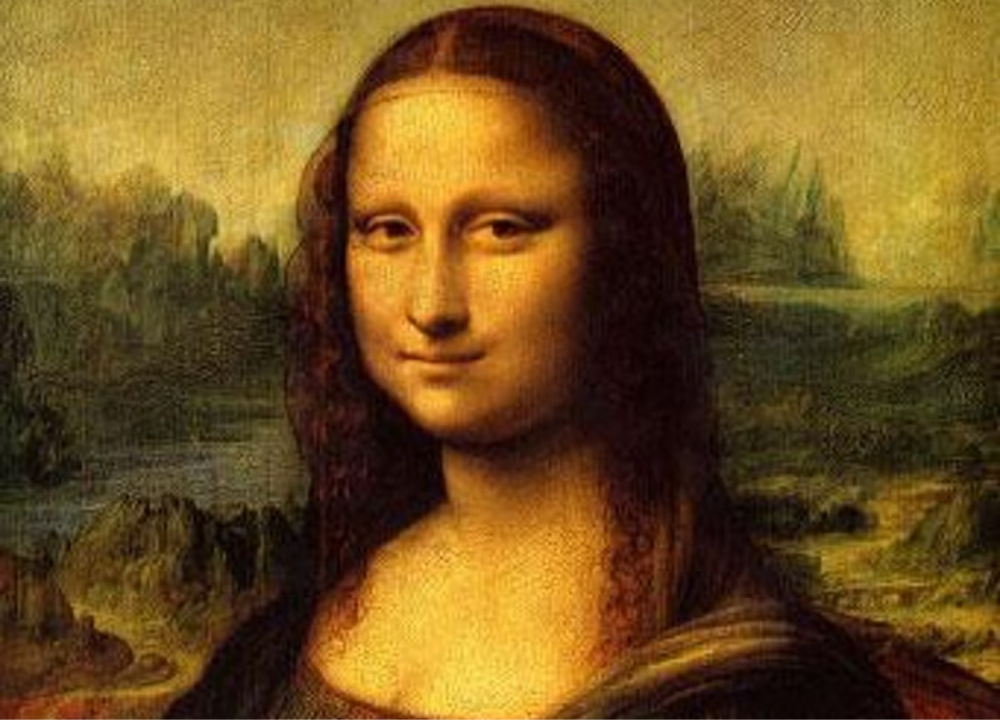Marcus Behmer designed the Exlibris for Frieda Liermann, showcasing his intricate and detailed illustration style. This bookplate reflects Behmer’s artistic finesse and Liermann’s literary passion.
Marcus Behmer, a renowned German artist, is celebrated for his exquisite bookplate designs. His work for Frieda Liermann, known as Exlibris, exemplifies his meticulous attention to detail and unique style. Bookplates, or exlibris, are personalized labels placed inside books, symbolizing ownership and often reflecting the owner’s interests.
Behmer’s design for Liermann is no exception, combining artistic elegance with a personal touch. These small yet significant pieces of art not only protect books but also add a layer of personality and history to a collection. Behmer’s contribution to the world of exlibris remains influential, showcasing the blend of art and literature.
The Life And Art Of Marcus Behmer
Marcus Behmer, an esteemed German artist, is renowned for his Exlibris Frieda Liermann, a celebrated piece in the world of bookplate design. His unique style and innovative approach have left an indelible mark on the art community. In this blog post, we delve into the life and art of Marcus Behmer, exploring his early life, artistic career, and significant influence on book design.
Early Life And Education
Marcus Behmer was born on October 1, 1879, in Weimar, Germany. His early years were marked by a profound interest in art and literature. He pursued his education at the Weimar Arts and Crafts School, where he honed his skills in various artistic disciplines. Behmer’s education provided a solid foundation for his future endeavors, fostering a deep appreciation for classical and modern art forms.
During his time at the Weimar Arts and Crafts School, Behmer was influenced by notable artists and teachers. He developed a keen eye for detail and an affinity for intricate designs. His early works displayed a blend of traditional techniques and innovative concepts, setting the stage for his later success.
Behmer’s early life and education were crucial in shaping his artistic vision. His exposure to diverse art forms and techniques allowed him to experiment and develop a distinctive style. The support and encouragement from his mentors and peers played a significant role in his artistic growth.
Behmer’s Artistic Career
Marcus Behmer’s artistic career began in the early 1900s. He quickly gained recognition for his exceptional bookplate designs, also known as ex libris. Behmer’s work was characterized by intricate details, elegant lines, and a unique blend of classical and modern elements. His bookplates were not just functional; they were pieces of art, reflecting the personality and tastes of their owners.
Behmer’s artistic career was marked by several significant achievements and collaborations. He worked with prominent publishers and authors, creating illustrations for books and periodicals. His illustrations were highly sought after for their beauty and precision. Behmer’s ability to capture the essence of a story or character through his art made him a favorite among writers and publishers.
Throughout his career, Behmer continued to evolve as an artist. He experimented with different mediums and techniques, expanding his artistic repertoire. His dedication to his craft and his constant pursuit of excellence earned him a prominent place in the art world.
Behmer’s Influence On Book Design
Marcus Behmer’s influence on book design is profound and lasting. His innovative approach to bookplate design transformed a functional item into a work of art. Behmer’s designs were not just decorative; they were an extension of the book’s content and the owner’s identity.
Behmer’s influence extended beyond bookplates. His illustrations for books and periodicals set a new standard for quality and creativity. He brought a unique perspective to book design, combining classical elements with modern aesthetics. His work inspired a generation of artists and designers, pushing the boundaries of what was possible in book design.
Behmer’s legacy in the world of book design is evident in the continued admiration and study of his work. His contributions have left an indelible mark on the field, influencing contemporary book design and illustration. Behmer’s ability to blend form and function, beauty and utility, continues to inspire artists and designers today.
Understanding Exlibris
Marcus Behmer, a renowned German artist, is celebrated for his intricate and expressive bookplates. His work, “Exlibris Frieda Liermann,” serves as a prime example of his mastery in this art form. In this section, we delve into the world of exlibris, exploring its definition, historical significance, and its unique manifestation in Behmer’s oeuvre.
Definition Of Exlibris
Exlibris, commonly known as bookplates, are small prints or labels pasted inside the front cover of a book. They typically bear the owner’s name, a motto, or a coat of arms. The primary function of an exlibris is to denote ownership, but it also serves as a personal mark of identity and taste.
Key characteristics of exlibris:
- Personalization: Often custom-designed to reflect the owner’s personality or interests.
- Artistic Value: Many bookplates feature intricate designs and are considered works of art.
- Historical Documentation: Exlibris can provide insights into the history and provenance of books.
Bookplates have evolved over time, encompassing various styles and themes. They range from simple text-based designs to elaborate illustrations, often created by prominent artists. The art of exlibris is a blend of graphic design, illustration, and typography, making each piece unique and valuable.
Historical Significance
Exlibris has a rich history dating back to the 15th century. The earliest known bookplates appeared in Germany around 1480. They were primarily used by nobility and scholars to mark their extensive libraries.
During the Renaissance, the demand for personalized bookplates grew, reflecting the cultural and intellectual revival of the period. By the 18th and 19th centuries, exlibris had become popular among the middle class, showcasing a wide range of artistic styles.
Historical milestones in exlibris:
| Period | Development |
|---|---|
| 15th Century | Introduction of bookplates in Germany. |
| Renaissance | Increased use among scholars and nobility. |
| 18th-19th Century | Widespread popularity among the middle class. |
Exlibris not only marked ownership but also reflected the social status and intellectual pursuits of the owner. Today, they are valuable collectibles, offering a glimpse into the personal libraries and tastes of the past.
Exlibris In Behmer’s Work
Marcus Behmer’s exlibris are renowned for their detailed and symbolic illustrations. His bookplates often feature intricate line work and a strong sense of composition, making each piece a miniature masterpiece.
One notable example is the “Exlibris Frieda Liermann,” which showcases Behmer’s unique style. The design reflects a blend of Art Nouveau and Symbolist influences, characterized by flowing lines and rich symbolism.
Key elements in Behmer’s exlibris:
- Symbolism: Use of symbolic imagery to convey deeper meanings.
- Intricate Detail: Fine line work and meticulous attention to detail.
- Artistic Fusion: Combination of different art styles and influences.
Behmer’s exlibris are more than just bookplates; they are artistic expressions that capture the essence of the owner. His work has left a lasting legacy in the world of exlibris, inspiring collectors and artists alike.
Frieda Liermann: The Book And Its Significance
Marcus Behmer’s ‘Exlibris Frieda Liermann’ is a beautiful example of his artistic brilliance. Frieda Liermann is a book that holds significant literary and artistic value. This blog post delves into the importance of this book and explores Behmer’s exquisite exlibris design for it.
Overview Of ‘frieda Liermann’
‘Frieda Liermann’ is a noteworthy book in the literary world. It captures the essence of a bygone era. The book features intricate storytelling and poetic prose. It is a favorite among collectors and literary enthusiasts.
The book’s main character, Frieda Liermann, is a strong and independent woman. Her journey through life’s challenges is both inspiring and relatable. Readers are drawn to her resilience and determination.
Here are some key elements of ‘Frieda Liermann’:
- Genre: Historical fiction
- Themes: Love, courage, and self-discovery
- Setting: Early 20th century Europe
- Protagonist: Frieda Liermann
The book has received praise for its rich narrative and compelling character development. It continues to be a sought-after piece for those who appreciate classic literature.
Context And Themes
‘Frieda Liermann’ is set against the backdrop of early 20th century Europe. This was a time of great change and upheaval. The book explores themes that are still relevant today.
Some of the central themes include:
- Love: The book portrays different forms of love, from romantic to familial.
- Courage: Frieda’s journey is filled with moments of bravery and strength.
- Self-discovery: The protagonist learns much about herself and her place in the world.
The historical context adds depth to the narrative. Readers get a glimpse of the societal norms and challenges of the time. This makes Frieda’s story even more compelling.
The book also addresses issues of gender and equality. Frieda’s character challenges traditional roles and expectations. Her story is a testament to the power of perseverance and self-belief.
Behmer’s Exlibris Design For ‘frieda Liermann’
Marcus Behmer’s exlibris design for ‘Frieda Liermann’ is a masterpiece in its own right. The design reflects the book’s themes and the era it represents.
Behmer’s artistic style is evident in the intricate details of the exlibris. The design features elements that symbolize Frieda’s journey and the book’s core themes.
Key features of Behmer’s design include:
- Detailed illustrations: Each element is meticulously crafted.
- Symbolic imagery: The design includes symbols of love, courage, and self-discovery.
- Historical references: Elements that hint at the early 20th century setting.
Behmer’s use of lines and shading adds depth and dimension to the exlibris. The design is both beautiful and meaningful. It enhances the reader’s connection to the book and its themes.
Overall, Behmer’s exlibris for ‘Frieda Liermann’ is a perfect blend of art and literature. It is a testament to his talent and understanding of the book’s significance.

Analysis Of Behmer’s Exlibris Design
Introduction paragraph about Marcus Behmer: Exlibris Frieda Liermann and 5. Analysis of Behmer’s Exlibris Design…
Symbolism And Imagery
Marcus Behmer’s exlibris for Frieda Liermann is a masterpiece of symbolism and imagery. Each element in the design holds deep meaning. The owl, for instance, symbolizes wisdom and knowledge. This reflects Liermann’s scholarly pursuits. The moon and stars in the background signify mystery and the unknown. This adds a layer of intrigue to the exlibris.
Behmer uses floral motifs to represent growth and beauty. Leaves and vines intertwine around the text, suggesting natural harmony and balance. The use of animals, such as the owl and a cat, adds a touch of personality. These animals may also reflect traits of the owner.
| Symbol | Meaning |
|---|---|
| Owl | Wisdom and Knowledge |
| Moon and Stars | Mystery and the Unknown |
| Floral Motifs | Growth and Beauty |
Behmer’s attention to detail is evident. Every symbol is carefully chosen and placed. This ensures that the exlibris is not just a bookplate but a work of art.
Typography And Layout
Typography plays a vital role in Behmer’s exlibris design. He uses elegant, serif fonts that convey a sense of timelessness and sophistication. The text is meticulously arranged to complement the imagery. The layout is balanced and symmetrical, creating a pleasing visual harmony.
Behmer employs varied font sizes and styles to emphasize different elements. The owner’s name, Frieda Liermann, is prominently displayed. This ensures immediate recognition. Additional text is smaller and more subtle, guiding the viewer’s eye through the design.
- Main Font: Elegant Serif
- Accent Font: Smaller, Subtle Serif
- Layout Style: Balanced and Symmetrical
Whitespace is skillfully used to avoid clutter. This enhances readability and aesthetic appeal. The integration of text and imagery is seamless. This creates a unified and coherent design.
Techniques And Materials Used
Behmer’s techniques and materials are integral to the quality of his exlibris designs. He often uses traditional printing methods, such as engraving and etching. These techniques allow for precise detail and depth.
High-quality paper is selected to ensure durability and a luxurious feel. Ink choices are carefully considered to provide richness and contrast. The combination of these elements results in a visually stunning and long-lasting exlibris.
- Engraving: Precise and Detailed
- Etching: Depth and Texture
- High-Quality Paper: Durability and Luxury
- Rich Ink: Contrast and Visual Appeal
Behmer’s mastery of these techniques ensures that each exlibris is not only beautiful but also a testament to his skill and dedication to the art form.
Impact And Legacy Of ‘frieda Liermann’
Marcus Behmer’s exlibris design for ‘Frieda Liermann’ remains a significant piece in the world of book art. This section delves into the impact and legacy of this exquisite artwork, highlighting its reception, influence on book design, and its status as a collectible.
Reception And Reviews
The ‘Frieda Liermann’ exlibris received widespread acclaim upon its release. Critics praised Behmer’s intricate detailing and artistic finesse. The design showcased Behmer’s mastery of fine lines and delicate etching, making it a standout piece in his portfolio.
Art critics and reviewers highlighted several aspects of the exlibris:
- The delicate balance of elegance and complexity.
- The use of symbolic elements that added depth to the artwork.
- The harmonious integration of typography with the visual elements.
Publications in art journals featured detailed analyses of the exlibris. They often included high-resolution images to showcase the minute details. This widespread coverage helped in solidifying Behmer’s reputation as a master of exlibris art.
| Publication | Review Highlight |
|---|---|
| Art Nouveau Magazine | “A masterpiece of delicate etching and symbolic richness.” |
| Book Art Quarterly | “An exemplary work that sets a high standard in exlibris design.” |
Overall, the reception of ‘Frieda Liermann’ was overwhelmingly positive, cementing its place in the annals of book art history.
Influence On Book Design
Marcus Behmer’s ‘Frieda Liermann’ exlibris had a profound impact on book design. Modern designers often draw inspiration from Behmer’s intricate detailing and symbolic use of elements.
Behmer’s work influenced the following aspects of book design:
- Attention to Detail: Designers began to incorporate more intricate details in their work.
- Symbolism: The use of symbolic imagery became more prominent.
- Typography Integration: Harmonious integration of text and visuals became a standard practice.
Behmer’s influence is evident in many contemporary book covers and exlibris designs. Designers often study his work to understand the balance between aesthetics and functionality.
Behmer’s legacy in book design is not just confined to his era. His principles and techniques continue to inspire new generations of artists. The ‘Frieda Liermann’ exlibris is a testament to his enduring influence.
Behmer’s Exlibris As A Collectible
Behmer’s exlibris designs, particularly ‘Frieda Liermann,’ are highly sought after by collectors. The intricate detailing and historical significance make these pieces valuable.
Collectors value Behmer’s exlibris for several reasons:
- Artistic Merit: The fine craftsmanship and artistic quality are unparalleled.
- Historical Significance: These pieces offer a glimpse into the art and culture of Behmer’s time.
- Rarity: Limited prints and well-preserved pieces are rare, increasing their value.
Auction houses and galleries often feature Behmer’s exlibris in their collections. These pieces frequently fetch high prices, reflecting their desirability among collectors.
| Venue | Estimated Value |
|---|---|
| Sotheby’s | $5,000 – $10,000 |
| Christie’s | $7,000 – $12,000 |
Behmer’s exlibris, especially ‘Frieda Liermann,’ continues to be a prized possession for art collectors, ensuring its legacy endures.
Frequently Asked Questions
Who Is Marcus Behmer?
Marcus Behmer was a German artist known for his intricate bookplates and illustrations. He contributed significantly to the Art Nouveau movement.
What Is An Exlibris?
An Exlibris, or bookplate, is a decorative label inside a book. It signifies ownership and often features unique designs.
Who Was Frieda Liermann?
Frieda Liermann was presumably a book owner for whom Marcus Behmer designed an Exlibris. Details about her are limited.
Why Are Exlibris Designs Significant?
Exlibris designs are significant for their artistic value and historical context. They offer insight into the owner’s personality and the era’s art.
Conclusion
Marcus Behmer’s Exlibris Frieda Liermann showcases exceptional artistry and detail. This work highlights his unique talent and creativity. Collectors and art enthusiasts will appreciate the intricate design. Explore more of Behmer’s works to understand his contribution to bookplate art. His legacy remains influential in the world of exlibris.




